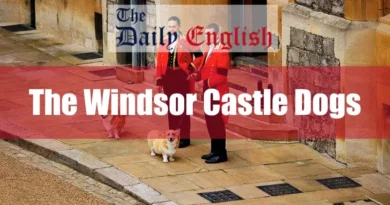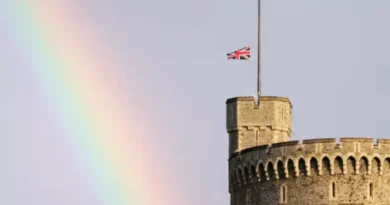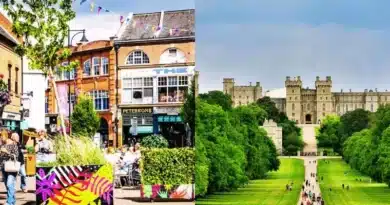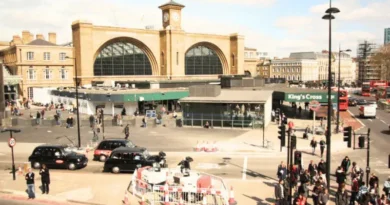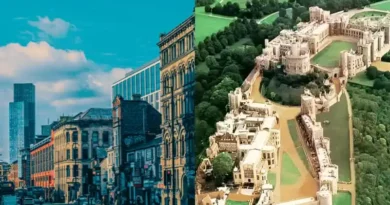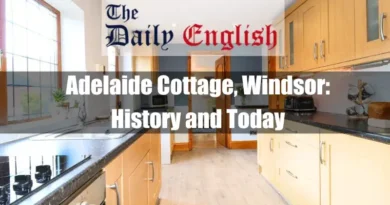How Much Are the Contents of Windsor Castle Worth?
Windsor Castle is one of the most historically significant royal residences, dating back to its construction in 1070 and completion in 1086. The castle is nearly 1,000 years old and serves as a symbol of British heritage. Although estimates for the castle’s market value estimated £503 million ($647 million), these numbers do not fully capture its true worth.
It’s important to note that such properties are typically not for sale, and their valuations are largely hypothetical. The British royal family’s real estate portfolio is extensive, with Windsor Castle being one of its most iconic assets.
The contents include priceless artefacts, historic architecture, and cultural treasures. As a national icon, Windsor Castle’s value transcends monetary terms. It is a national treasure and will never be sold, ensuring its legacy as a living piece of history.
Introduction
Windsor Castle is a historic and cultural landmark, standing as a symbol of British heritage for nearly a millennium. As the world’s largest and oldest inhabited castle, its intrinsic value far exceeds its monetary estimates. This article examines the unique attributes and financial aspects associated with the castle and its priceless contents.
Historical Overview of Windsor Castle

Origins and Early Use
Windsor Castle was established as a military base in 1070 under the reign of William the Conqueror. Construction concluded in 1086, laying the foundation for what would become a royal residence. By 1350, King Edward III transformed the castle from a defensive stronghold into an opulent palace, spending £50,000—a sum equivalent to £60.7 million today. This shift marked the castle’s evolution into a residence reflecting royal prestige.
Modern Use
Over the centuries, Windsor Castle has served as a refuge during wartime, including for the royal family during World War II. It has also hosted key royal events, such as the wedding of Prince Harry and Meghan Markle in 2018 at St George’s Chapel.
Estimated Financial Worth
Market Valuation
Based on recent assessments, Windsor Castle’s market value is estimated at £497 million to £523 million ($574 million to $665 million). This represents an increase of over 700% due to appreciation in real estate markets. However, these figures account solely for the physical structure and land and do not encompass the castle’s priceless contents.
Maintenance Costs
The annual upkeep of Windsor Castle costs approximately £21.4 million ($27 million), funded by the Sovereign Grant—a taxpayer-supported allocation. The grant also covers security and maintenance of the surrounding Home Park, managed by the Crown Estate.
The Invaluable Contents of Windsor Castle
Art and Antiquities
Windsor Castle houses part of the Royal Collection, one of the most significant art collections in the world. It includes:
- Paintings by renowned artists such as Rubens, Van Dyck, and Holbein.
- Historical arms, armour, and furniture from various centuries.
- Unique artefacts like Queen Mary’s Dollhouse, an intricate model complete with running water and electricity.
Architectural Features of Windsor Castle
St. George’s Chapel

St. George’s Chapel, a jewel of Windsor Castle, is a masterful example of Perpendicular Gothic architecture. Designed during the reign of Edward IV and completed by Henry VIII, the chapel was built to serve the Most Noble Order of the Garter, the highest order of chivalry in Britain. Its exquisite fan-vaulted ceilings, intricate stonework, and stained-glass windows exemplify the architectural innovation of the late medieval period.
The chapel is also a royal mausoleum, hosting the tombs of monarchs like Henry VIII, Charles I, and Queen Elizabeth II. This sacred space remains central to royal ceremonies, including weddings and funerals, solidifying its historical and cultural significance.
The Round Tower

The Round Tower is an iconic feature of Windsor Castle, standing prominently on a raised motte at the heart of the complex. Originally constructed as a defensive structure, its stone fortifications date back to the 12th century under Henry II. The tower provides panoramic views of the Thames Valley and surrounding areas, enhancing its strategic value.
Architecturally, it has been adapted over centuries, including height adjustments by architect Jeffry Wyatville in the 19th century to improve its proportions. Today, the Round Tower symbolises the castle’s enduring legacy and an essential element of its picturesque silhouette.
The Long Walk

The Long Walk is a grand, tree-lined avenue stretching 2.65 miles from the castle’s south side to the Copper Horse statue of George III. Established during the late 17th century, this landscaped feature highlights the castle’s integration into its natural surroundings.
Its symmetrical rows of trees create a sense of majesty and perspective, aligning perfectly with the castle’s central axis. The Long Walk is a beloved venue for royal celebrations and public gatherings, further linking Windsor Castle to the British people.
Evolution of Architectural Styles
Windsor Castle’s architecture reflects over 950 years of adaptation to historical trends and monarchic preferences. Initially a Norman motte-and-bailey fortress built by William the Conqueror, it was fortified with stone under Henry II in the 12th century. Gothic and Perpendicular Gothic elements emerged prominently during the construction of St. George’s Chapel in the 14th and 15th centuries.
Later, Baroque influences appeared in interior spaces under architects like Antonio Verrio and Grinling Gibbons. Modern restorations, such as those following the devastating 1992 fire, integrated fireproofing techniques while preserving historical details, ensuring the castle’s architectural integrity remains intact.
Windsor Castle’s architectural features, from its towering fortifications to its intricate chapel, exemplify the evolution of royal building traditions and continue to stand as a testament to British heritage and craftsmanship. These elements, combined with its royal connections, underscore why Windsor Castle is considered a priceless national treasure.
Cultural Significance
Each artefact and architectural element at Windsor Castle contributes to its role as a living museum. The castle’s contents symbolise British identity and continuity, making them impossible to appraise in monetary terms.
Renovations and Public Accessibility
1992 Fire Restoration
A fire in 1992 caused significant damage to the castle, requiring £36.5 million ($46 million) in repairs. Funding came from public donations, entry fees, and the Queen herself, who contributed £2 million ($2.5 million).
Tourism and Revenue
Windsor Castle attracts millions of visitors annually, generating revenue through entry fees and events. The castle’s role as a tourist destination enhances its financial value while fostering cultural appreciation.
Why Windsor Castle Cannot Be Valued
Windsor Castle’s worth transcends monetary evaluation for several reasons:
- Historical Depth: Nearly 1,000 years of continuous royal association make it irreplaceable.
- Cultural Significance: It embodies British history and monarchy, influencing national identity.
- Unique Contents: The artefacts and architecture are one-of-a-kind and irreplaceable.
- Public Affection: The castle holds a deep emotional connection with the British people and global admirers.
As a national treasure, Windsor Castle will never be sold. Its value lies not only in its stones and mortar but in its symbolic and historical significance.
Conclusion
Windsor Castle is a cornerstone of British heritage. Its physical structure, rich history, and priceless contents make it an irreplaceable national treasure. While market estimates suggest a value in the hundreds of millions, the castle’s true worth cannot be quantified. It serves as a testament to the enduring legacy of the British monarchy and the preservation of cultural history.
FAQ
What is the estimated value of Windsor Castle’s contents?
The exact value of Windsor Castle’s contents isn’t publicly disclosed. However, the castle itself is estimated to be worth approximately £503 million ($647 million).
How valuable are the State Apartments’ furnishings?
The State Apartments at Windsor Castle are adorned with priceless artworks, antique furniture, and historic artefacts. While specific valuations aren’t available, these items significantly contribute to the castle’s overall worth and cultural heritage.
Are the Crown Jewels kept at Windsor Castle, and what is their value?
The Crown Jewels are primarily housed in the Tower of London, not Windsor Castle. Their value is estimated to be between £3 billion and £5 billion, though exact figures are speculative due to their historical and cultural significance.
How does the value of Windsor Castle’s contents compare to Buckingham Palace?
Buckingham Palace is estimated to be worth £1.3 billion ($1.6 billion), significantly higher than Windsor Castle’s £503 million ($647 million).
How much is the Windsor Castle worth?
Windsor Castle, a historic royal residence in Berkshire, England, is valued at an estimated £497.5 million to £523 million (approximately $647 million to $665 million) as of 2022. These figures underscore the castle’s immense historical and cultural significance and its distinction as the oldest and largest inhabited castle globally. However, such valuations are largely theoretical, as properties of this nature are not typically available for sale. Windsor Castle is among the most iconic assets in the extensive real estate portfolio of the British royal family.




